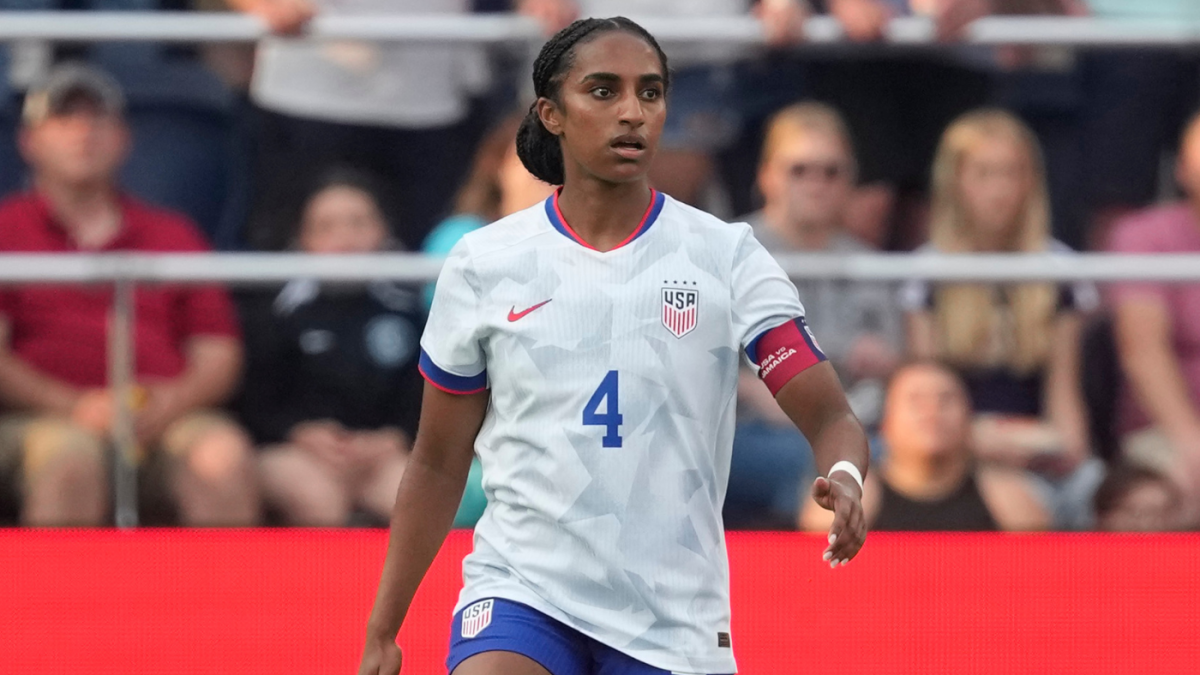Reshaping the USWNT: Emma Hayes’ Strategic Vision
The United States Women’s National Team (USWNT) is at a crossroads, guided by the steady hand of new head coach Emma Hayes. While the team’s illustrious history remains a source of pride, Hayes is forging a new path, one that balances the wisdom of veterans with the energy of rising stars, particularly those from the National Women’s Soccer League (NWSL).
Prioritizing the NWSL Pipeline
Hayes’ tenure has been marked by a deliberate focus on NWSL players. This isn’t just about convenience; it’s a strategic move to tap into a rich talent pool. Hayes views the NWSL as a “key development resource” for the USWNT, a sentiment echoed in her roster selections. She’s not afraid to give opportunities to players with fewer than 20 caps, indicating a long-term vision to deepen and strengthen the squad.
This approach isn’t just about the present; it’s about the future. By providing a “break” to European-based stars after their club seasons, Hayes is addressing potential burnout and ensuring the longevity of key players. Meanwhile, NWSL players gain valuable international experience, staking their claim for future roster spots.
Naomi Girma: A Standout in the New Era
While the focus is on NWSL players, Naomi Girma stands out as an exception. The Chelsea defender is a consistent presence in Hayes’ squads, even when other European-based players are rested. Hayes has praised Girma’s “importance to this team,” highlighting her as a foundational player.
Girma’s consistent selection is likely due to her recent successful stint with Chelsea, where she won the FA Cup Final and the treble. Her performance and leadership qualities are invaluable, providing stability to the defensive line. Moreover, her recent injury battle means Hayes is likely reintegrating her gradually to maintain match fitness.
Integrating New Faces and Returning Players
Hayes isn’t just relying on established stars. Her rosters are a mix of familiar faces and newcomers. Six players on recent 25-player rosters have yet to appear in a senior national team game, showcasing Hayes’ commitment to fresh talent.
The return of players like Rose Lavelle and Croix Bethune from injury is another key focus. Hayes’ “patient approach” to reintegrating these players reflects her broader strategy of prioritizing player well-being and long-term development. Lo’eau LaBonta’s first-ever USWNT call-up is another example of Hayes recognizing and rewarding strong club form.
Early Results and Tactical Insights
Hayes’ tenure is still in its infancy, but early results offer a glimpse into her tactical approach. The USWNT’s recent match against Japan, though a loss, was seen as a “good fight,” with promising signs of youth movement. Hayes’ strategic integration of young midfielders shows her willingness to experiment and adapt.
The team’s victory over China PR demonstrated Hayes’ ability to implement a clear game plan and achieve positive results. Her focus on building a cohesive unit and fostering a strong team culture is evident in her praise for the “great group of senior players” setting the standard for newcomers.
The Road to 2027 and Beyond
Hayes’ long-term vision for the USWNT centers on building a sustainable system for consistent high-level competition. Her emphasis on the NWSL, coupled with her willingness to embrace new talent and carefully manage veteran players, suggests a strategic approach to squad building.
Upcoming friendlies against Ireland and Canada, as well as matches against Iceland and Argentina, will provide valuable opportunities to refine tactics and assess player depth. The 2027 Women’s World Cup in Brazil is on the horizon, and Hayes is clearly laying the groundwork for a successful campaign.
A Foundation for Future Success
Emma Hayes’ early actions as USWNT head coach signal a departure from the past, not in ambition, but in methodology. By prioritizing the NWSL, carefully managing player workloads, and embracing both established stars and emerging talent, she is building a foundation for sustained success. The consistent inclusion of Naomi Girma underscores the importance of proven quality, while the opportunities afforded to new players demonstrate a commitment to the future. Hayes isn’t just inheriting a legacy; she is actively shaping one, and the USWNT appears to be entering a new era of strategic development and competitive excellence.
Conclusion: The New Dawn
The USWNT is at the dawn of a new era under Emma Hayes. Her strategic vision, focusing on the NWSL pipeline, careful player management, and a blend of experience and youth, is reshaping the team. As the road to the 2027 Women’s World Cup unfolds, Hayes’ approach promises a future of sustained success and competitive excellence. The legacy of the USWNT is in good hands, and the best is yet to come.











